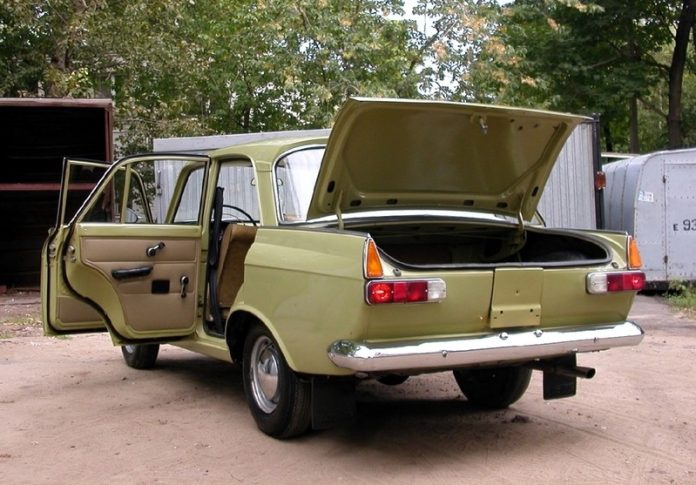The idea of using hydrogen as a vehicle fuel is nothing new. The USSR first turned to this fuel en masse during the Siege of Leningrad—not out of a desire for innovation, but out of sheer necessity. When the barrage balloons reached the end of their lifespan, the hydrogen stored within them was simply released. Meanwhile, the besieged city was in dire need of gasoline.
Military technician Shelishch found a solution: he upgraded the engine of a standard lorry, making it run on hydrogen. Decades later, in 1976, this idea was revisited in a more technologically advanced form at the Kharkov Research Center of the Institute of Mechanical Engineering Problems.
Experimental “Moskvich-412”
The essence of the experiment was to split water into oxygen and hydrogen. Oxygen was released into the atmosphere, and hydrogen served as fuel. To achieve this, engineers developed a special reactor-catalyst that, using metal oxides, separated water into its components. The resulting gas was fed directly into the engine cylinders through a system of additional pipelines.
The standard engine and all its equipment remained unchanged; regular fuel could also be used if desired. Externally, the experimental Moskvich was no different from the production cars (according to some sources, only an additional tank was welded to the side).
Water-splitting equipment was installed in the trunk. Pressing the gas pedal increased the rate of the chemical reaction, which increased the fuel supply and accelerated the car. The main advantage over modern hydrogen cars was that the gas was not stored in a cylinder – it was generated directly while driving. This significantly reduced the risk of explosion. The experiment was classified, and the details of the reactor design were never disclosed.
Results
The result was a success: the Moskvich-412 really did run on water. However, the press reported this ironically – as a curious technical curiosity. Probably, this was the order of the higher-ups. Nobody was going to restructure AZLK production for the sake of a new system – it required state testing, development of safety measures, modernization of equipment, huge expenses and, most importantly, time.
And there was no particular need: oil was cheap then, and the country did not experience a shortage of it. That’s why the hydrogen Moskvich remained an interesting but forgotten experiment, while the familiar cars that Soviet citizens had been waiting for for years and buying with joy continued to roll off the assembly line.









